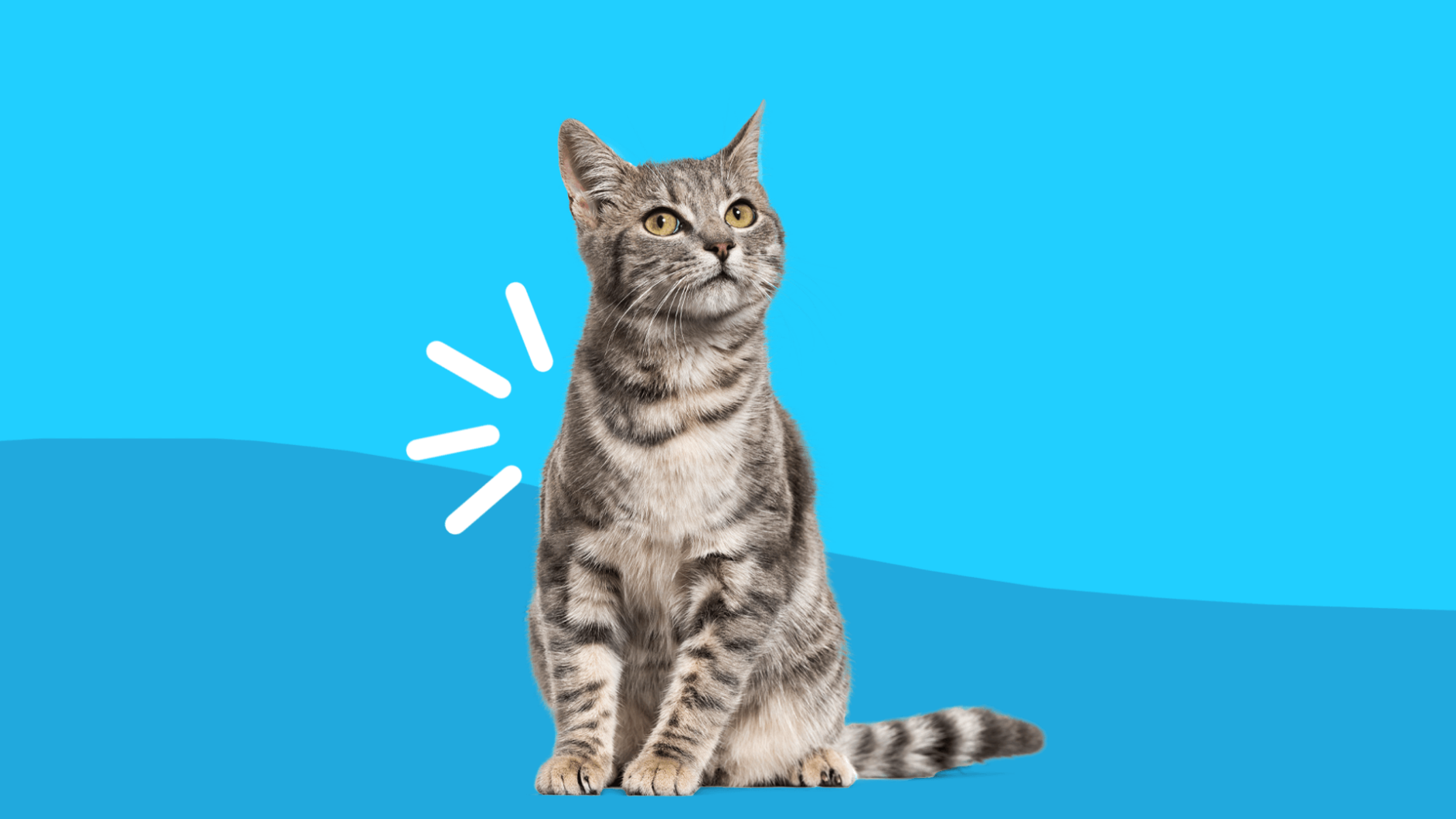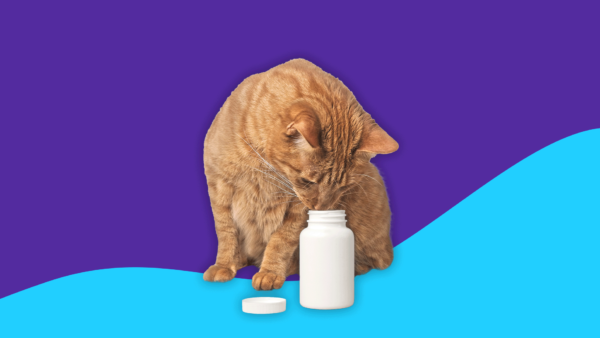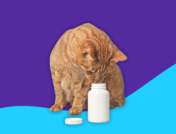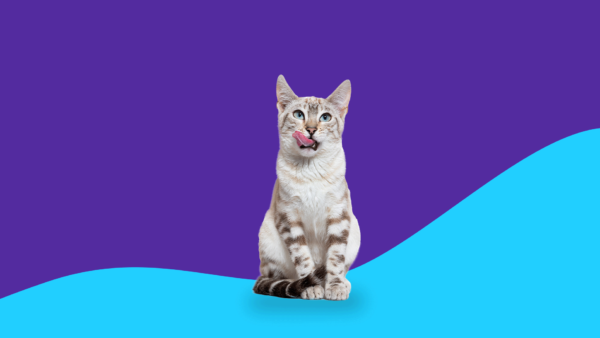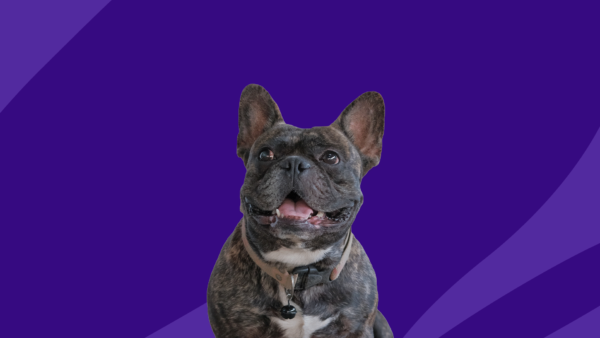Key takeaways
Gabapentin is used to treat nerve pain, chronic pain, and seizures. It’s also a mild sedative before veterinary visits or other stressful events. Veterinarians sometimes use it to treat feline hyperesthesia syndrome, depending on the suspected cause.
The standard gabapentin dosage for cats is 3–20 mg/kg every six to 24 hours.
The most common side effects of gabapentin in cats are sedation and loss of coordination.
Do not give gabapentin to cats if they have an allergic reaction to the drug.
Gabapentin was originally developed as an anticonvulsant to treat seizure disorders in humans and is now more often used to treat neuropathic pain. Gabapentin is not FDA approved for use in pets, but veterinarians often use it off-label to calm a cat before stressful events such as a vet visit. Less common uses of gabapentin in cats include treatment for neuropathic pain, seizures, and sometimes for feline hyperesthesia. How gabapentin works isn’t fully understood. Its effects are to slow down nerve signals. This helps prevent seizures, tamp down pain signals, and calm fearfulness or anxiety in a cat.
RELATED: Save up to 80% on gabapentin
What is gabapentin used for in cats?
The FDA has not approved the use of gabapentin in cats. When veterinarians prescribe gabapentin for cats, they do so off-label. It’s most commonly used as a single-dose sedative or an add-on drug to treat seizures, chronic pain, or nerve pain. It’s one possible treatment for cats with hyperesthesia.
Anxiety
Veterinarians usually prescribe a single dose of gabapentin to provide mild sedation before a veterinary visit or other stressful event. The dose will be given to the cat at least one and a half hours before the examination or stressful event. Gabapentin is not commonly used in cats as a long-term anxiety medication. Environmental changes, diet changes, and supplements are the preferred treatments. If those don’t work, veterinarians usually prescribe selective serotonin reuptake inhibitors (SSRIs) or buspirone.
Seizures
Veterinarians use gabapentin in cats as an adjunct therapy in controlling seizures or epilepsy. If a cat is having seizures, the symptoms will vary depending on the type of seizure. If a cat is showing unusual behaviors or symptoms that look like seizures, talk to a veterinarian. Veterinarians usually don’t prescribe gabapentin at first but rely instead on other anticonvulsants such as phenobarbital, levetiracetam, and zonisamide. If preferred antiepileptic medications don’t control seizures as expected, gabapentin or another drug may be added.
Pain
Veterinarians use gabapentin for neuropathic pain or as an adjunct to manage chronic pain. A cat suffering from chronic pain will usually show symptoms such as limping, lameness, reluctance to move, mood changes, meowing, and licking the affected area. The most common reason cats and other animals experience chronic pain is osteoarthritis. Gabapentin is often used in conjunction with other pain medications to treat osteoarthritis in cats. The preferred pain medications for chronic pain management in cats are nonsteroidal anti-inflammatory drugs (NSAIDs) and other types of medications unless the pain is due to nerve problems.
Hyperesthesia
Feline hyperesthesia syndrome (rolling skin disease) is a painful skin hypersensitivity unique to cats. It has many causes, including allergies, infections, seizures, neuromas, pain, anxiety, compulsiveness, stress, and internal diseases. Veterinarians don’t always find the cause. Symptoms include skin rippling, tail biting, tail chasing, aggression, meowing, and distress behaviors. Diagnosing and treating the condition can be complex, so there are several possible treatments. Gabapentin may be used if the veterinarian suspects nerve pain or seizures as a potential cause.
Is gabapentin safe for cats?
Veterinarians consider gabapentin to be safe for cats, provided pet owners follow all the veterinarian’s instructions for giving their cat gabapentin.
The smallest commercial-available dose of gabapentin is sold as a 100 mg capsule. This may be too large of a dose for a cat. The prescription may need to be prepared at a compounding pharmacy.
Gabapentin is never given to cats who are allergic to it. Pregnant cats should not be given gabapentin.
Cats eliminate gabapentin through their kidneys. Cats with kidney disease may need dosage adjustments. Gabapentin may not be safe in cats with severe kidney disease.
Side effects of gabapentin in cats
In cats, the most common side effects of gabapentin are sleepiness and incoordination (ataxia). These effects are most likely to happen at the beginning of treatment. They should improve as the cat adapts to the drug. At higher doses, cats will experience muscle relaxation.
Less common side effects include drooling and vomiting.
Interactions of gabapentin with other pet meds
Pet parents do not need to worry about dangerous drug interactions when giving a cat gabapentin. However, that doesn’t mean there won’t be problems when gabapentin is combined with some drugs, such as:
- Antacids. When gabapentin is given within two hours of an antacid, less gabapentin is absorbed into the bloodstream, making it less effective.
- Opioids. When given with opioids, gabapentin is more effective. It’s also more likely to cause drowsiness. Gabapentin makes hydrocodone less effective as a pain medication.
- Drugs that cause sedation. Gabapentin causes mild symptoms of sedation, including drowsiness and poor coordination. When a cat is given other drugs such as benzodiazepines, antihistamines, opioids, mirtazapine (used as an appetite stimulant in cats), and cannabidiol (CBD), the cat is more likely to experience sedation side effects.
- Gabapentin may need to be discontinued before sedation or anesthesia.
Gabapentin dosage for cats
There are no standard gabapentin doses for cats. Veterinarians will prescribe a dose they believe is appropriate and safe, given the cat’s weight, medical condition, and history. The veterinary literature proposes a dosage range of 5–30 mg/kg every six to 24 hours. Research on gabapentin blood levels in cats suggests the optimal dose is between 10 and 20 mg per kilogram of body weight given every eight hours.
Since gabapentin is commonly used for sedation before a fear-inducing event, there’s more precision concerning the dose.
- Standard gabapentin dosage in cats as sedation before a veterinary examination or stressful event: 20 mg/kg taken by mouth or 50 mg/cat or 100 mg/cat one to two hours before an appointment or other fear-inducing event
Can cats overdose on gabapentin?
Cats can overdose on gabapentin. It will cause noticeable side effects but is not known to be fatal. The cat will most likely get sleepy and uncoordinated. The muscles may go limp if the dose is high enough. If an overdose is suspected, call a veterinarian or an animal hospital for medical advice. Usually, all that’s needed is to keep the animal in a safe space or confine it to a carrier or cage.
Can I give my cat gabapentin every day?
Cats can be given gabapentin every day if prescribed by a veterinarian. Do not give gabapentin to a cat on your own. Even though gabapentin can be prescribed as a daily medication, pet owners often give gabapentin as a single dose to calm the cat before visiting a veterinary office or traveling.
How to give your cat gabapentin
Pet parents give their cats gabapentin by mouth as a capsule, tablet, or oral solution. The small doses required by a cat may need to come from a compounding pharmacy.
- Give this medication as instructed.
- Give this medication by mouth with or without food.
- Gabapentin capsules can be opened, and the powder mixed with food.
- If a dose is missed, give it when remembered unless it’s almost time for the next dose. In that case, skip the missed dose and give the next dose as scheduled.
- Never give the cat extra doses.
- Store gabapentin capsules or tablets at room temperature. Gabapentin oral solution will come with storage instructions.
If the veterinarian prescribes the liquid form of gabapentin, pet owners can use human formulations such as Neurontin or an oral suspension prepared by a compounding pharmacy. Follow all dosing instructions that come with the medicine.
If gabapentin is a daily treatment for a cat, do not suddenly quit using the medication without talking to the prescribing veterinarian. The sudden discontinuation of gabapentin can bring on seizures. When it’s time to quit the medication, the veterinarian will prescribe a steadily decreasing dose.
Gabapentin alternatives for cats
Gabapentin is not often the first choice for many of the conditions it’s used for. Except for sedation before a stressful event, the evidence for its effectiveness for other conditions is low. In many cases, people will start their cat on alternative medications before a veterinarian suggests gabapentin.
For sedation prior to a veterinary examination or other stressful event, gabapentin is often a first choice because of its safety and effectiveness at calming cats and making them compliant. Alternatives include:
- Benzodiazepines such as alprazolam, clonazepam or lorazepam
- Clonidine
- Trazodone
- Acepromazine
Gabapentin is a preferred choice when cats suffer from nerve pain due to intervertebral disc herniation, neuromas, peripheral neuropathy, or injury. However, veterinarians may use more than one drug. For nerve pain, gabapentin alternatives include:
- Pregabalin
- Amantadine
- Amitriptyline
- NSAIDs such as robenacoxib or meloxicam
- Opioids
- Local anesthetics
Alternative but unproven treatments include:
- Herbal supplements
- Special diets
- Acupuncture
For osteoarthritis or orthopedic pain, gabapentin is usually not the first choice. Instead, veterinarians prefer NSAIDs like robenacoxib or meloxicam or the monoclonal antibody injection, frunevetmab (Solencia), as more effective treatments. Gabapentin or amantadine may be added if pain relief is not sufficient.
For seizures in cats, there’s little evidence outside of case reports about the effectiveness of various treatments. Veterinarians usually prescribe phenobarbital, zonisamide, or levetiracetam. If these don’t work well enough, gabapentin may be used as an adjunct treatment. Alternative adjunct treatments include:
- Clonazepam
Alternative but unproven seizure control treatments for cats include:
- Cannabidiol (CBD)
- Special diets
- Acupuncture
Summary
Veterinarians commonly use gabapentin in cats to treat chronic pain, nerve pain, seizures, and hypersensitive skin. It is a proven treatment as a single-dose treatment to calm a cat before fear-inducing situations such as veterinary visits, travel, or similar stressful events. It’s a safe medication to give to cats even as daily treatment if prescribed by a veterinarian and all dosing instructions are followed. The most common side effects are sedation and lack of coordination, and serious side effects are rare.
Sources
- Analgesics used in animals, Merck Veterinary Manual
- Behavioral problems of cats, Merck Veterinary Manual
- Effects of a single preappointment dose of gabapentin on signs of stress in cats during transportation and veterinary examination, Journal of the American Veterinary Medical Association
- Epilepsy in cats: theory and practice, Journal of Veterinary Internal Medicine
- Gabapentin, Plumb’s Therapeutics Brief
- Gabapentin, Plumb’s Veterinary Manual, 7th edition
- Gabapentin (Neurontin), Veterinary Partner
- Hyperesthesia syndrome in cats, Veterinary Partner
- Maintenance anticonvulsant or antiepileptic therapy, Merck Veterinary Manual
- Medicine to ease the feline mind, DVM360
- Neuropathic pain in dogs and cats, Veterinary Partner
- Recognizing pain and distress in animals, Boston University Office of Research
- Seizure management for the small animal practitioner, Auburn University College of Veterinary Medicine
- Using gabapentin to reduce feline stress, DVM360



